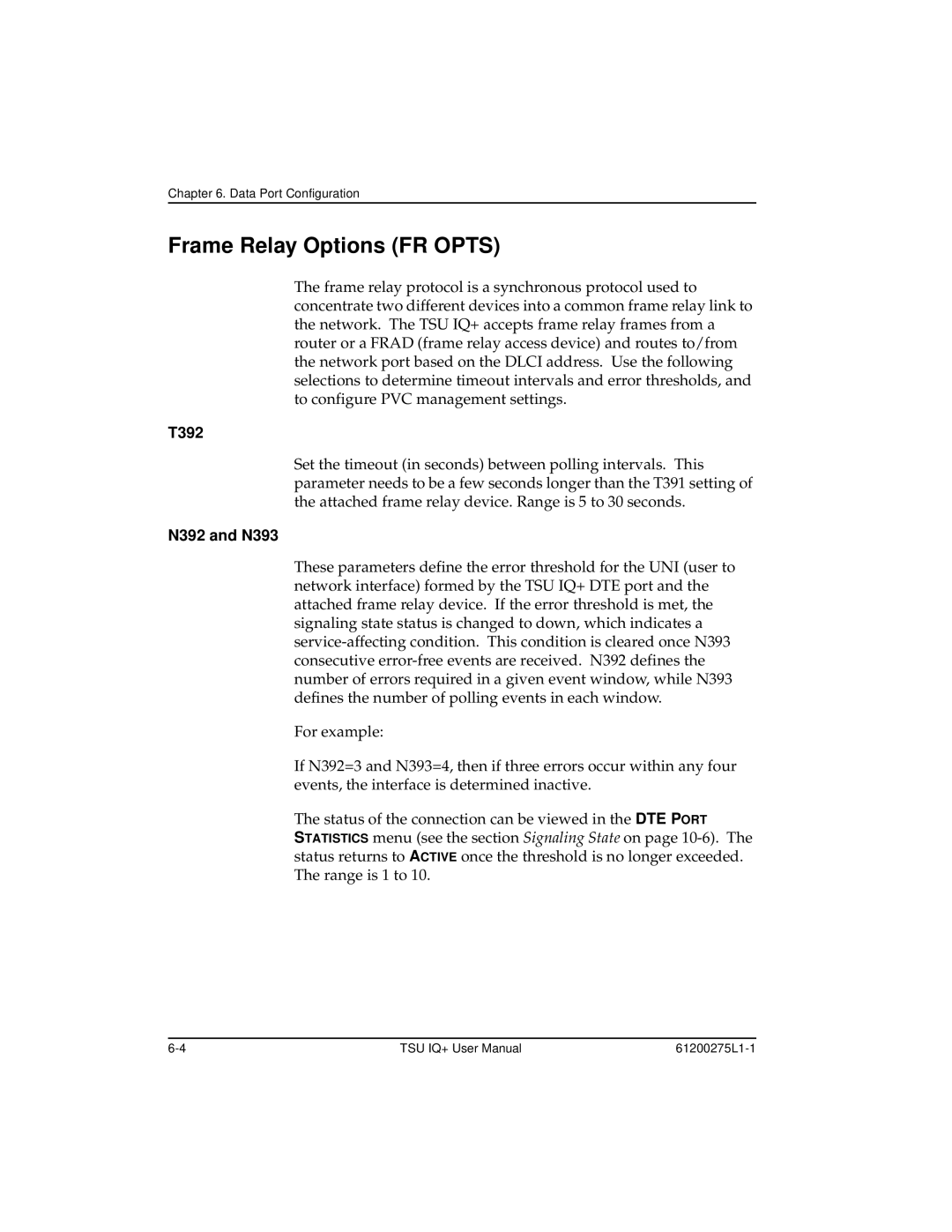
Chapter 6. Data Port Configuration
Frame Relay Options (FR OPTS)
The frame relay protocol is a synchronous protocol used to concentrate two different devices into a common frame relay link to the network. The TSU IQ+ accepts frame relay frames from a router or a FRAD (frame relay access device) and routes to/from the network port based on the DLCI address. Use the following selections to determine timeout intervals and error thresholds, and to configure PVC management settings.
T392
Set the timeout (in seconds) between polling intervals. This parameter needs to be a few seconds longer than the T391 setting of the attached frame relay device. Range is 5 to 30 seconds.
N392 and N393
These parameters define the error threshold for the UNI (user to network interface) formed by the TSU IQ+ DTE port and the attached frame relay device. If the error threshold is met, the signaling state status is changed to down, which indicates a
For example:
If N392=3 and N393=4, then if three errors occur within any four events, the interface is determined inactive.
The status of the connection can be viewed in the DTE PORT
STATISTICS menu (see the section Signaling State on page
TSU IQ+ User Manual |
|
